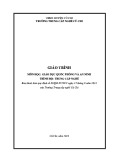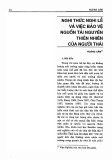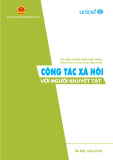
Social perception of the integration of Romani people
(Gypsies) into the labor market
Rus Mihaela
“Ovidius” University of Constanța, Romania
psiholog_m@yahoo.com
Sandu Mihaela Luminița
“Ovidius” University of Constanța, Romania
mihaela_naidin@yahoo.com
Abstract. Over the years, the gypsies have been the subject of various discussions, being
cataloged as „dirty gypsies, thieves, lazy and who do not want to learn” and especially those
responsible for the negative image of Romania abroad, in other words they were „the apple of
discord” in the Romanian society. The „valves” were also opened after the incidents in France
in 2010 that generated new discussions on the problems due to the Roma, the optimal solution
in solving these problems being the integration of the Roma in the society. However, the vast
majority of Romanians are reluctant to integrate the gypsies into society, especially on the labor
market, and this is due to the public image, most often negative, which gypsies "enjoy". We
chose this theme, in the idea of supporting the integration of the Roma in the labor market,
considering this step an advantage in favor of the economy of the country, since the limited
access of Roma people to the labor market causes Romania to lose at least 887 million euros
annually, according to a report by the World Bank. Also, we consider it is necessary to integrate
them in the labor market and due to the fact that the taxes and social contributions that they pay
are far below the majority population, with notable effects on the Gross Domestic Product. A
final argument that contributed to the choice of this theme is that the integration of the members
of this population in the labor market could be a positive proof for the efficiency of the policies
and projects implemented over time in their favor.
Keywords. perception, integration, gypsies, work
Gypsy minority
"Gypsy problem" (Stoian, Mark et al, 2010) is a topic well known to all. It is known and
affirmed by government representatives in many of the debates, symposia, conferences,
organized for decades. Until recently it was considered a serious „problem” and the terminology
used by this minority to self-identify, which results from the disagreement with the proposal of
the Romanian deputy Silviu Prigoană to replace the official name of the Romani people from
„rrom” in „gypsy”, registered at the Romanian Senate in September 2010. However, what is
the correct term? „Romani people” or „Gypsy”?
From a scientific point of view the correct term is that of „Romani„ being „an old word
of the Roman language, always used for the designation of Romani ethnicity” (Grigore, 2009)
but by the 1980s the term was very little known in Western Europe and thus the term „gypsy”
170
Technium Social Sciences Journal
Vol. 5, 170-184, March 2020
ISSN: 2668-7798
www.techniumscience.com






























